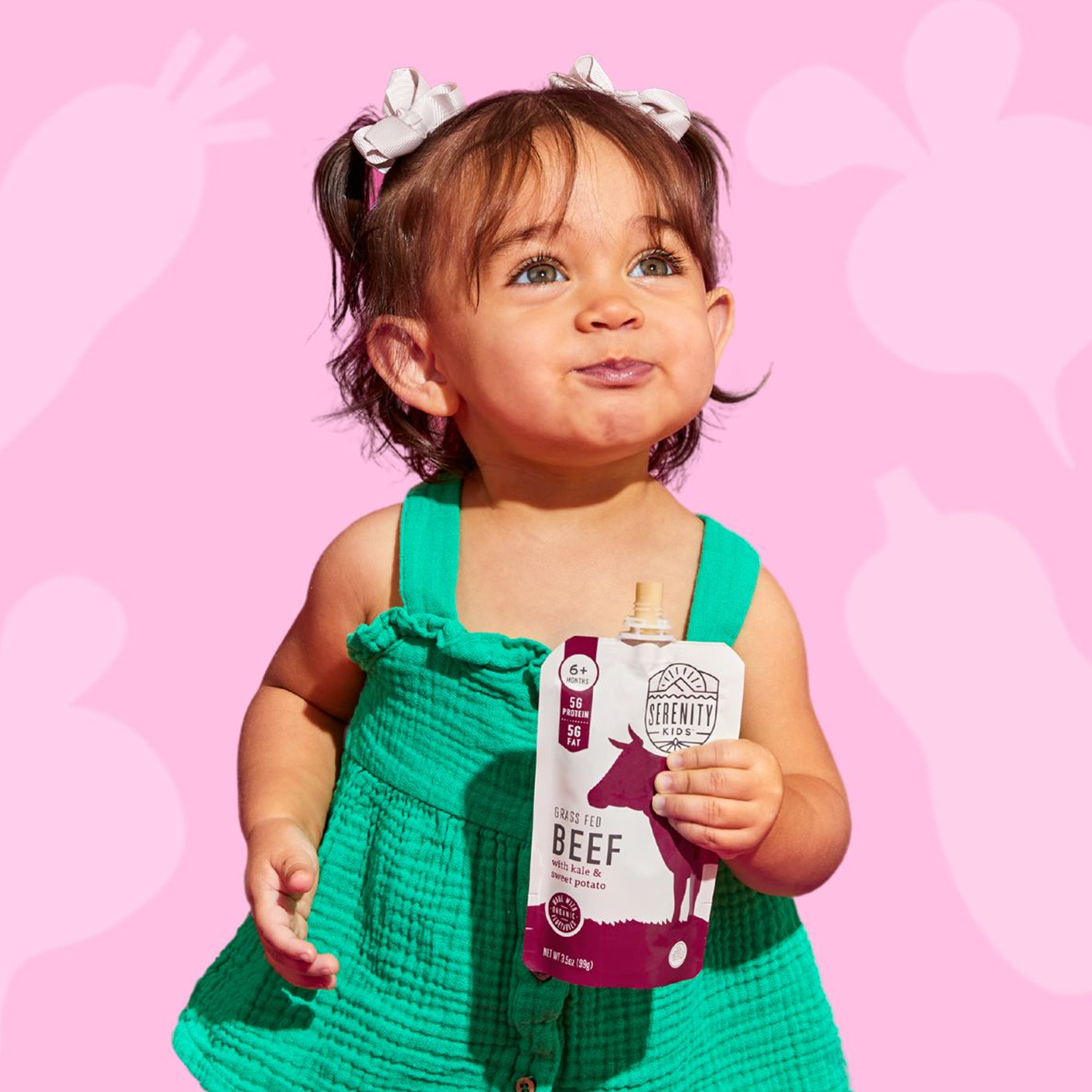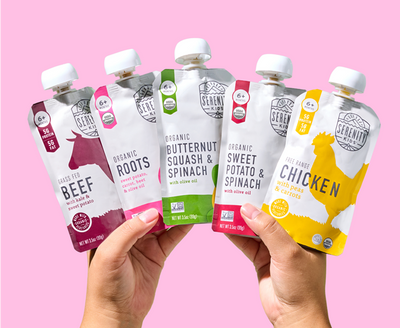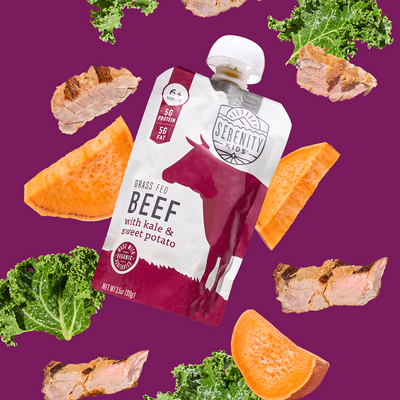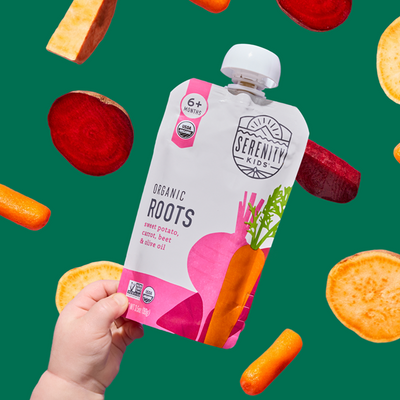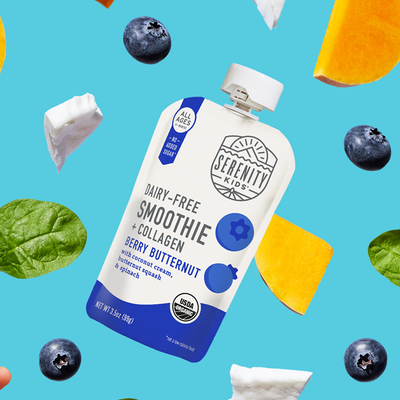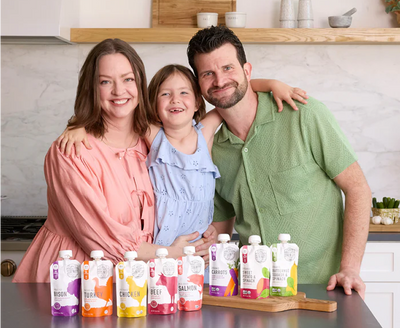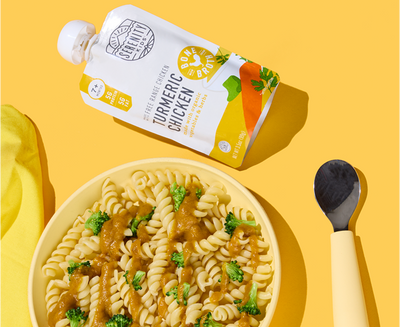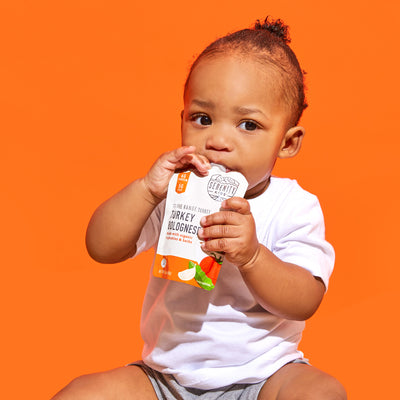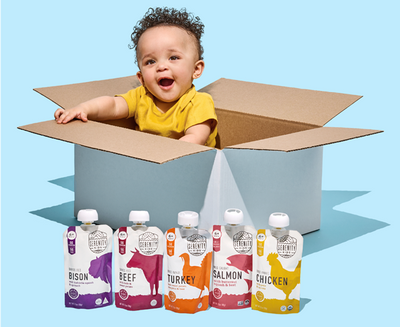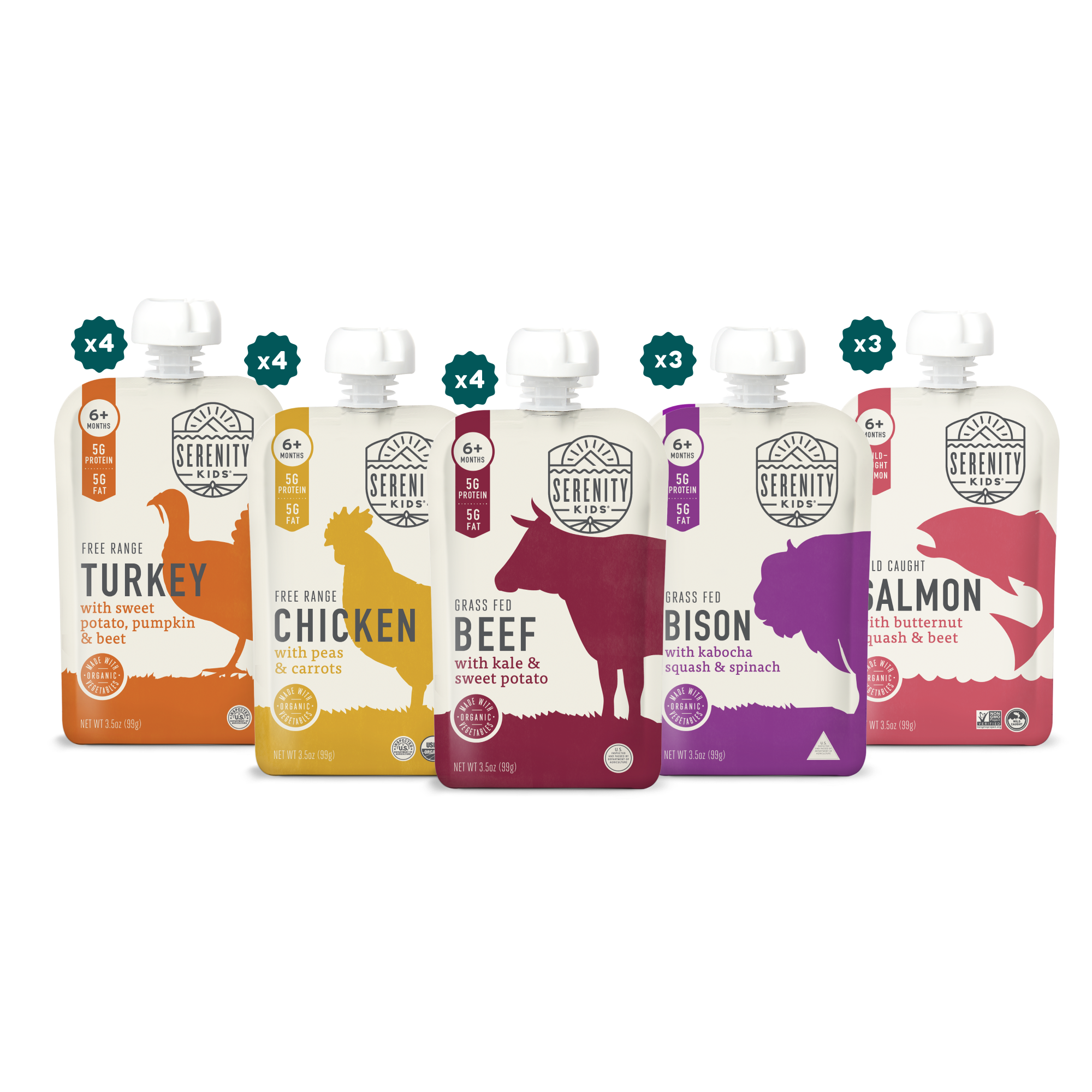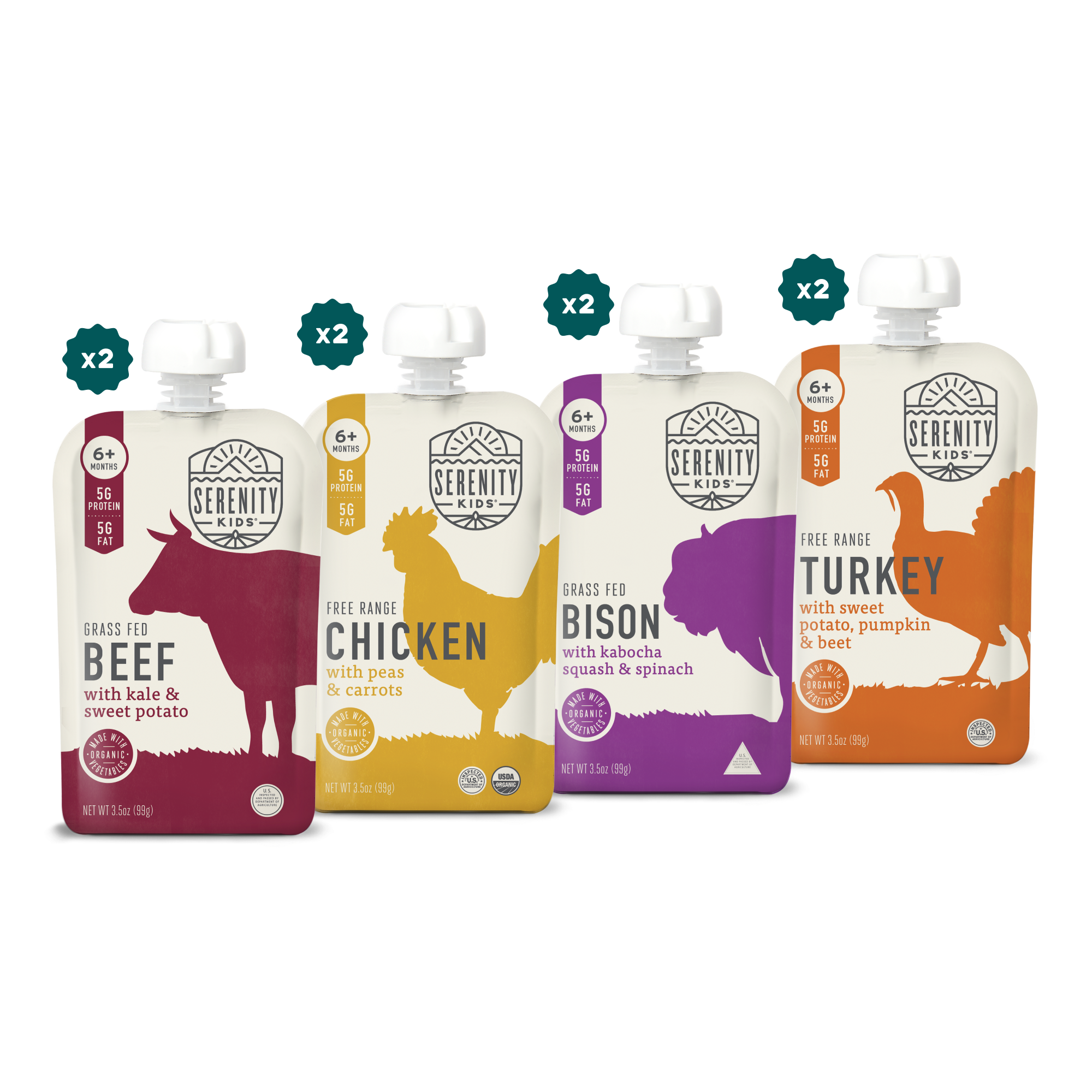TABLE OF CONTENTS
Written by Hillary Bennetts
August 15, 2023
Division of Responsibility: A Parent's Guide to Feeding
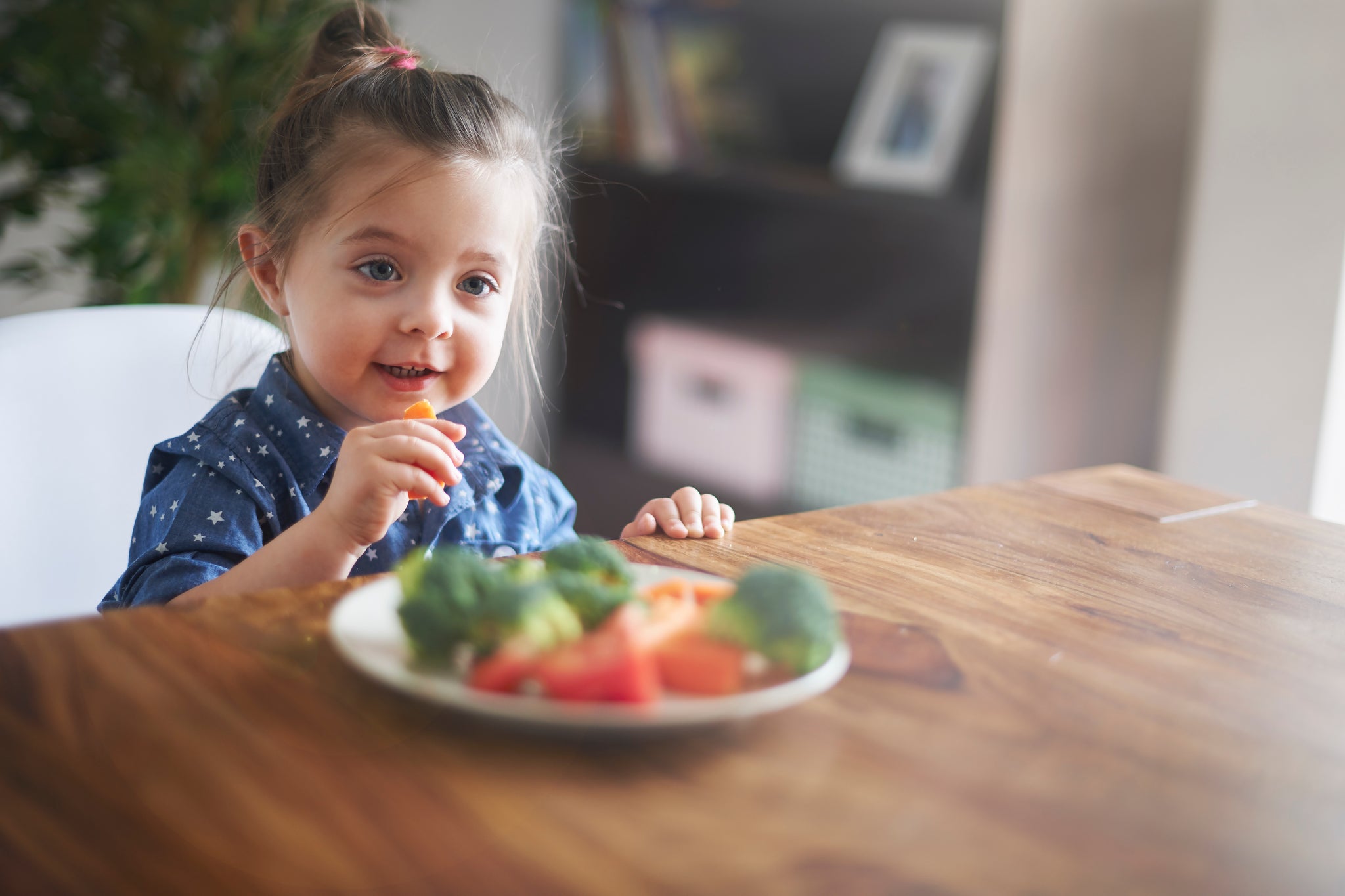
We never have mealtime battles. Said by no parent EVER! Whether your kid has picky eating tendencies or is just testing their independence and limits, we know mealtime battles can be a huge challenge for any parent.
But dang it, bribing, pleading, pushing, and threatening the child can make mealtimes even more stressful and can even promote unhealthy eating habits in the long term.
So what the heck are we to do? As it turns out, research has shown that there’s another way to approach mealtimes. It's called the Division of Responsibility feeding method. Pioneered by registered dietitian Ellyn Satter, it just might be the answer to your mealtime battles. It is a very simple concept that can be challenging to implement, but once you get the hang of it is so liberating! Read on for what it means, why it could be beneficial for both you and your little one, and how to implement this practice into your lives.
What is the Division of Responsibility?
Ellyn Satter's division of responsibility outlines what is the parent’s job, and what is the kid's job. She emphasizes that it is the parents' responsibility to provide healthy meals and snacks at regular times, and it is the child’s responsibility to decide what and how much they will eat. In short, the mantra is "I provide, you decide" or "Parents provide, kids decide".
The division of responsibility feeding method creates an atmosphere that respects the child's autonomy, development, and appetite. It encourages parents not to push food on children or use food as a reward or punishment. Instead, parents are encouraged to use non-food strategies to encourage appropriate behavior and to let their children learn to self-regulate their appetites to ensure healthy eating habits. For many parents this is a process of letting go of their fears around their child’s eating, and breaking the habit of trying to control their food consumption.
When Do You Need to Try the Division of Responsibility Feeding Approach?
When might the division of responsibility feeding approach work for you? Here are some scenarios (spoiler alert: the answer is basically all of the time with a toddler or other young eater!)
- Picky eaters: If a child is a picky eater, the division of responsibility feeding method may be useful in encouraging them to try new foods and expand their palate.
- Mealtime battles: If mealtimes have become stressful and contentious due to power struggles between parents and children over what and how much to eat, the division of responsibility feeding method can help reduce tension and create a more harmonious atmosphere.
- Overeating: If a child tends to overeat or consume unhealthy foods in large quantities, the division of responsibility feeding method can teach them to listen to their body's hunger and fullness cues and to make more balanced food choices. This typically happens to older children.
- Food-related anxiety: If a child has anxiety around food or eating, the division of responsibility method can help reduce stress and promote a more positive relationship with food.
- General desire for healthy eating habits: Regardless of any specific challenges with food, parents may choose to try the division of responsibility method simply because they want to encourage healthy eating habits in their children and establish a positive relationship with food from an early age.
- Stress: If you or your partner feel regular stress or fear around your child’s eating, and seem to want to control or micromanage their food intake.
Benefits of the Division of Responsibility Method
The division of responsibility method has a number of potential benefits:
Minimizes mealtime struggles and tension
When both parents and children are actively trying to determine what to eat at a meal, battles ensue. But when a parent first selects what they will offer and then a child is free to decide what and how much food to eat, the mealtime negotiation can eventually disappear.
Helps children eat a healthy diet
Because you, as the parent, provide options from which to choose, you can decide what to serve. That can include only healthy options. If foods of low nutrient value aren't available to eat, a child cannot eat them.
Fosters children's awareness of their appetite and fullness levels
When a child is given the autonomy to choose what and how much they want to eat, they can better listen to their natural hunger and fullness cues. They don't feel like they need to eat one thing to earn another, clean their plate, or take "just one bite" to try something.
Helps children understand how to manage snacks and treats
If a child is no longer able to snack on demand and instead knows that they will wait until their next meal or snack to eat, they will eventually stop the constant requests for snacks. Snacks or treats are no longer a negotiation.
Reduces Worry
Can help parents let go of fear and worries around their child’s eating so they can focus on other things.
Practicing Division of Responsibility: A Step-by-step
Ready to put the division of responsibility approach to eating into practice? Here's how to divide the responsibilities between the “parents’ jobs” and the “children’s jobs.”
Parents’ jobs
Parents choose the what, when, and where to eat
It is the parent's job to decide what shows up on a child's plate, when they are offered their own food, and where the child is allowed to eat. This means that you can choose primarily healthy foods and only offer food at meal times or snack time, and you can decide whether or not to offer more food if requested. You can also determine whether you want your child to eat at the table or if they are allowed to eat in other environments, like in a learning tower at the counter.
Parents maintain regular eating times
It is up to the parents to establish regular meal and snack times. Consistency is key here. Children respond better when they are able to anticipate their opportunities to eat. Eating family meals together is a great way to foster a positive relationship with food.
Parents demonstrate how to act during mealtime
Kids learn by observing, and that is true of meal times too. Encourage the whole family to model the behavior that you want your kids to learn at the dinner table. For example, using please and thank you, staying off phones or other screens, and eating a variety of different healthy foods.
Parents notice their children's preferences
Observe what your child eats so that you can learn their preferences for flavors, textures, and even how food is cut and the temperature at which it is served. You'll notice tendencies toward certain foods, which can help inform how you build their plate going forward. However, try to avoid staring at your child while they eat or commenting on how much or what they choose to eat. You can also have conversations with them as much as they’re able, and take their stated preferences into account as much as is reasonable.
Parents avoid using food as reward or punishment
Data shows that teaching a child to eat for any other reason than because they are hungry can lead to unhealthy eating habits. It has become common in our society to reward people with food or use it as a way to celebrate behavior. Try to resist the urge to reward a child for trying new foods, exhibiting a desired behavior, or soothing an upset child with food. Also avoid threatening punishment if they don’t eat, or taking away healthy foods as a way to motivate behavior change.
Parents heal their own foods issues
Many of us were not taught healthy eating habits and now have some kind of emotional, physical, phycological, baggage around food. We may not even realize this until we notice ourselves obsessing or micromanaging our child’s food intake. It is our job to notice this and work to heal our food issues or at least change our behavior lest we pass these issues onto our child.
Children’s jobs
Children choose what to eat, how much, and in what order
The child decides which foods to eat and how much food they want to eat. This sounds simple, but can be so hard to do! As parents, we often think it is our job to “get them to eat”, when in reality all living creatures naturally consume food. Even animals choose what, how much and when they eat, so trying to “get a kid to eat” is to treat them like a plant, feeding and watering them as if they don’t have agency. Though this is a hard habit to break, it can be very liberatory as a parent to realize we aren’t responsible for making them consume food.
Children can decide when they are satisfied and stop eating
Allowing kids to decide when they are finished helps them develop a healthy relationship with food by helping them learn to recognize their body's natural hunger and fullness cues. If they are not used to having this power, in the beginning they may stop eating earlier than their body needs and end up feeling hungry later. This is totally ok, and will quickly teach them to each enough at mealtimes to not be hungry later.
Children learn how to wait between meals
Rather than an all-day buffet of snacks, children learn that meals and snacks come at periodic intervals. This also helps to encourage eating at meals since they start to understand that they can't have a snack immediately after the meal if they choose not to eat.
Division of Responsibility Method: 6 Tips for Transforming Mealtime Into a Healthy, Positive Experience
Here are six tips for introducing the division of responsibility method for eating:
1. Follow a regular schedule
Children thrive on routines, and that goes for meals too. When kids can anticipate their next opportunity to eat, they are less likely to pummel you with requests for snacks. They are also more likely to eat to satiety when they know that they can't have a snack 30 minutes after finishing a meal.
2. Provide a variety of food
Encourage children to try new foods, but do not force them. Offer a variety of healthy foods, and keep offering them even if they reject them the first few times. One good rule of thumb to try is one favorite food and one new (or disliked) food with every meal.
3. Place something on the table that your children love
Imagine going to another country and not recognizing anything on a plate that is served to you. It might feel a little overwhelming. Kids can feel this way too when they are served several new or unfamiliar foods together. Balance out their plate and make them feel safe and comfortable in their eating environment by always providing one of their favorite foods, or "hero foods."
4. Resist the temptation to press
It can be tempting to encourage children to finish their plate or to "take just one bite", but resist the urge to get involved in their decision-making process. It is ok to let them know when there is only a few minutes left for mealtime so they know the end is near, just try not to add on the “so eat up” at the end.
5. Set the stage for an enjoyable eating experience
Help make eating times pleasant for everyone by setting up a positive environment. Eat at the table together, turn off the television, put away the phones, and take off the pressure to clean plates or try everything on the plate. Eating should be enjoyable and a chance for the family to connect!
6. Be patient!
Change doesn't happen overnight. The transition to this method can be difficult at times for both the parent and the child. It might result in your child being hungry in between meals as they learn to eat to satiation at meal or snack times, which is uncomfortable for most parents. It might result in them not eating certain foods you consider important (like meat or vegetables) for a few meals in a row. These are normal parts of the process and the parent’s job is to trust that they will return to eating those foods as they fully accept that they’re responsible and their body needs them.
FAQ
Is this all sounding like something that you want to try, but you still have questions? We've got answers! Here are some common questions that come up around the division of responsibility in feeding methods:
1. What if my children don’t like the food I make?
The reality is that most children won't like all of the food you make, especially the first few times you offer it. That's why it is important to offer a wide variety of foods and to keep offering them, even if they've been rejected a few times. Try to mix up the form factor of the foods too. For example, if your kid rejects roasted cauliflower, try cauliflower rice with butter.
2. What if my children only liked one of the dishes I made?
There might be times when your child decides to eat only one of the items on his or her plate. That is part of the process. Just let them decide; don't force or react. If they’re hungry later you can remind them that they didn’t eat much of their meal.
3. What if my children say they are hungry between meals?
Early on in your transition to this method, your child may feel hungry between meals if they didn't eat much at the prior meal or snack. This is especially common with older kids as they adjust to a new approach to eating. Your job is to hold steady on the time of the next meal or snack and let them know it’s ok to feel hungry.
4. What if my children persist in consuming only one type of food?
If your child is super picky and seems to persist in eating only one or a small number of the same food, continue to offer small portions of different foods and consider reaching out to a feeding kids therapist or occupational therapist who can help assess sensory issues and other factors.
5. What if I think my child isn’t eating enough?
It might seem that your child isn't eating enough at times, but know that as children grow, their natural hunger cues can fluctuate tremendously from day to day. One day it may seem like kids eat very little, and another day they may seem like a bottomless pit. This is actually a good sign that they are listening to their body and eating only when truly hungry. If you are still uncertain, reach out to your healthcare provider to get a check on their growth and development.
6. What if I think my child might have some sort of disordered eating?
Weird and unpredictable eating habits are normal for toddlers, disordered eating is not common, but if you suspect your child is struggling with disordered eating, reach out to a registered dietitian or therapist to assess their needs and help support them.
7. What about dessert?
Regular dessert after every meal is not something we recommend introducing for your child, especially as a reward for eating their meal. If your child is already used to this, it will likely be an uncomfortable transition. You could start by cutting this down to just one meal a day, with the goal of removing it entirely.
8. What if my child will only eat “junk food”?
Remember, you provide, they decide. It’s up to you to provide a variety of foods. That can include some “junk food” if that is what feels safe and familiar to them, but it can also include some new balanced foods so that junk food isn’t the only option. It can take some adjustment for kids to learn that what is provided is all that is available until their next meal or snack, but they’ll eventually learn and modify their choices as they want.
9. What if they ask for more of a certain food on their plate?
You provide the food, so you can determine how much to offer. You can choose to offer unlimited quantities of a particular food to help your child learn to self-regulate, or you can tell your child that there is no more of a certain food (which happens often with things like small pints of berries!). No matter what you decide, remember that there should never be a negotiation with your child (e.g., you can have more pasta once you eat a meatball).
You Might Also Like
· 1 min read · Recipes
· 7 min read · Education
